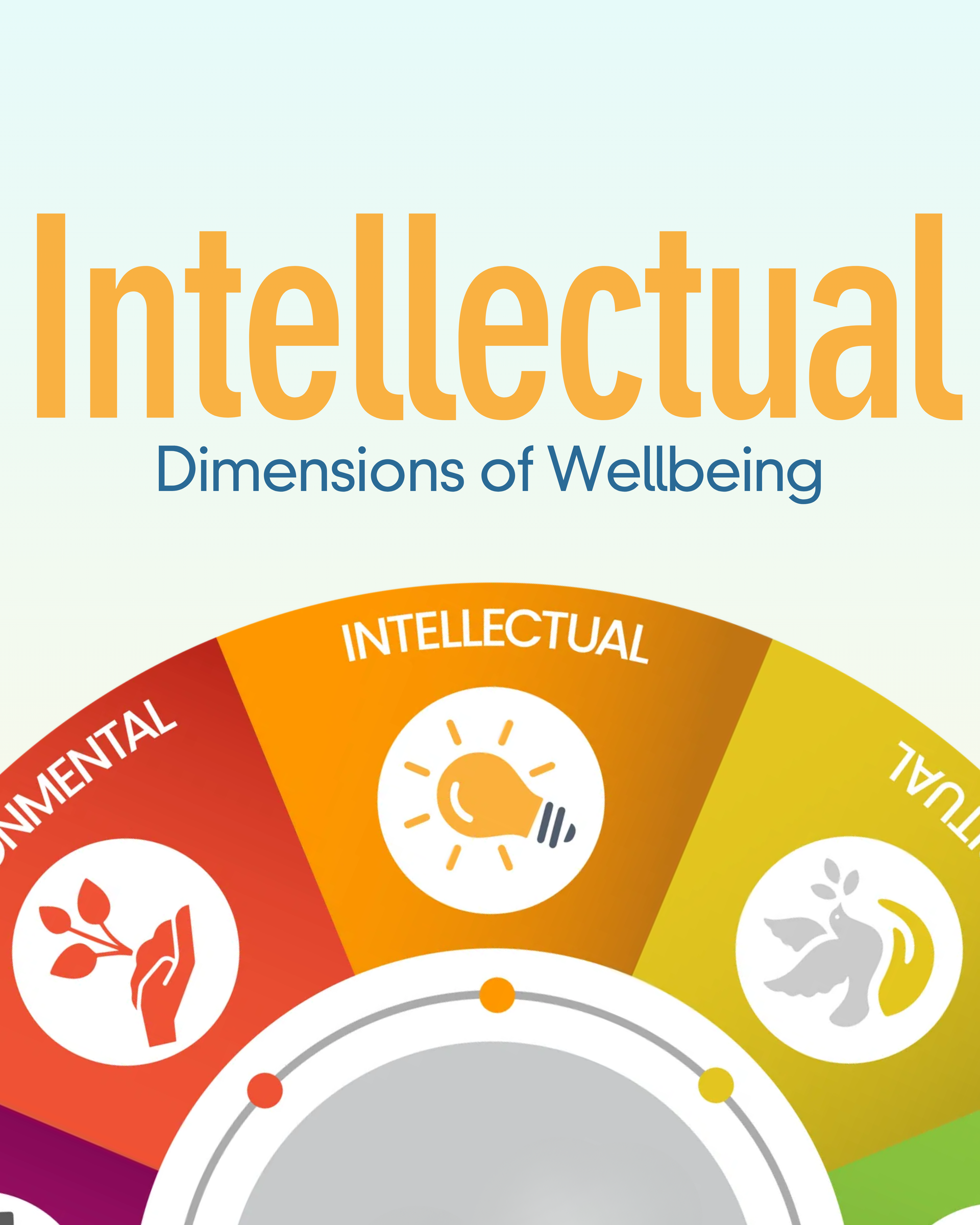The 8 Dimensions of Wellbeing: Intellectual Wellbeing

When we talk about your “wellbeing” as a college student, we’re talking about more than having a good attitude or hitting the gym. Wellbeing is made up of eight interconnected dimensions that shape how we feel, function, and live. These include emotional, physical, social, intellectual, spiritual, environmental, occupational, and financial wellbeing. When one area is off, it can affect all the others.
In this post, we’re taking a closer look at the fourth dimension: Intellectual Wellbeing.
What Is Intellectual Wellbeing?
Intellectual wellbeing is your ability to think critically, stay curious, and engage in lifelong learning. Beyond academic performance or getting good grades, intellectual wellbeing involves feeling mentally stimulated, challenged, and open to new ideas.

This dimension is where you feed your mind and build your capacity to learn, question, reflect, and grow. Intellectual wellbeing shows up when you explore new interests, wrestle with complex ideas, or make space for creative expression.
It also includes your mindset toward learning itself. Do you see challenges as opportunities or threats? Are you able to engage without burnout? Are you stretching your mind in ways that excite you?
How Intellectual Wellbeing Shows Up
In college, this dimension is often front and center, and it doesn’t just happen in the lecture hall. Intellectual wellbeing shows up when:
- You feel engaged in at least one class or topic you’re exploring.
- You’re able to think critically about what you read, hear, and experience.
- You ask questions and seek out new perspectives even if they challenge your current beliefs.
- You carve out time for curiosity outside the classroom (books, podcasts, art, documentaries, etc.).
- You feel confident in your ability to learn something new whether that’s coding, cooking, or changing your major.
When this area is strong, your brain feels alive and active. You’re not just going through the motions of learning either. You’re connected to the
why behind what you’re learning and how it relates to your growth.

What to Watch For
College is a time of intense academic pressure, and it’s easy to associate learning only with deadlines, tests, and stress. When intellectual wellbeing gets out of balance, it can start to look like:
- Feeling mentally checked out or bored by everything you’re learning
- Constantly overwhelmed by schoolwork or mentally exhausted
- Avoiding academic challenges out of fear of failure
- Comparing your intelligence or performance to others in a way that drains you
- Losing interest in things that used to excite you or make you feel creative
- Feeling stuck in a fixed mindset (believing your abilities are set in stone)
If any of this sounds familiar, it doesn’t mean you’re not smart or that you’ve chosen the wrong path. It might just be a sign that your intellectual wellbeing needs more nourishment. This is your permission to learn in a way that energizes you.
Coming Up Next:
Spiritual Wellbeing










